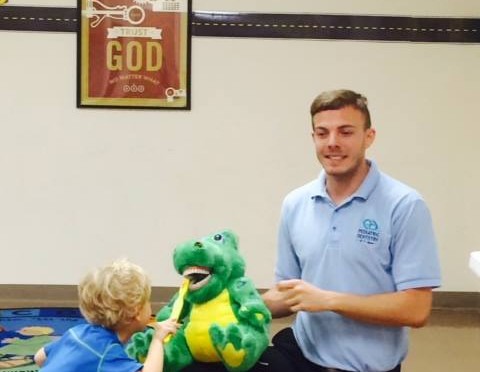How Does the Food We Eat Affect Our Teeth?
As obesity runs rampant in the US, people are more acutely aware of how food affects their bodies in terms of fat content and calories,[…]
Gum Disease in Children
Gum disease doesn’t discriminate by age. It’ll find any worthy victim who doesn’t have good oral health. In fact, the primary cause of gum disease[…]
Everything You Need to Know About Teething
Lucky for you, cutting teeth doesn’t happen all at once. (So you have about three fussy years ahead of you!) Transitioning from their gummy grin[…]
15 Facts and Myths Concerning Cavities
Sugar is the prime cause of cavities. Myth, but almost a fact. In reality, bacteria in your mouth produces acid, which then attacks your teeth.[…]
Emergency Dental Care for Children
Hopefully this falls into that “Things You Know but Hopefully Never Have to Use” category, but it’s better to be prepared for your child’s dental[…]

Pediatric Dentistry of Ft. Myers Ante’s Up For Autism
FORT MYERS, Fla. (March 11, 2015) – Pediatric Dentistry of Ft. Myers, Dr. Tim Verwest, DMD will be the wild card sponsor at the 4th[…]

7 Reasons You and Your Child Should Get Your Teeth Cleaned
It’s hard to get to the dentist. There’s no doubt about that. And without any noticeable pain or discomfort, it’s easy to keep putting it[…]
Teaching Your Child To Floss
Let’s face it – as adults, we generally don’t floss, despite the constant nagging from our dentists and the guilt-ridden, embarrassed responses we’re forced to[…]
When Should You Make Your Child’s First Dentist Appointment?
The first trip to the dentist comes a lot sooner than you might think. Doesn’t it feel like baby just popped out and now he[…]

Motivating Kids to Care for Their Teeth
We can teach children how to brush their teeth, but convincing them to do it is another story. We talk to people all of the[…]
